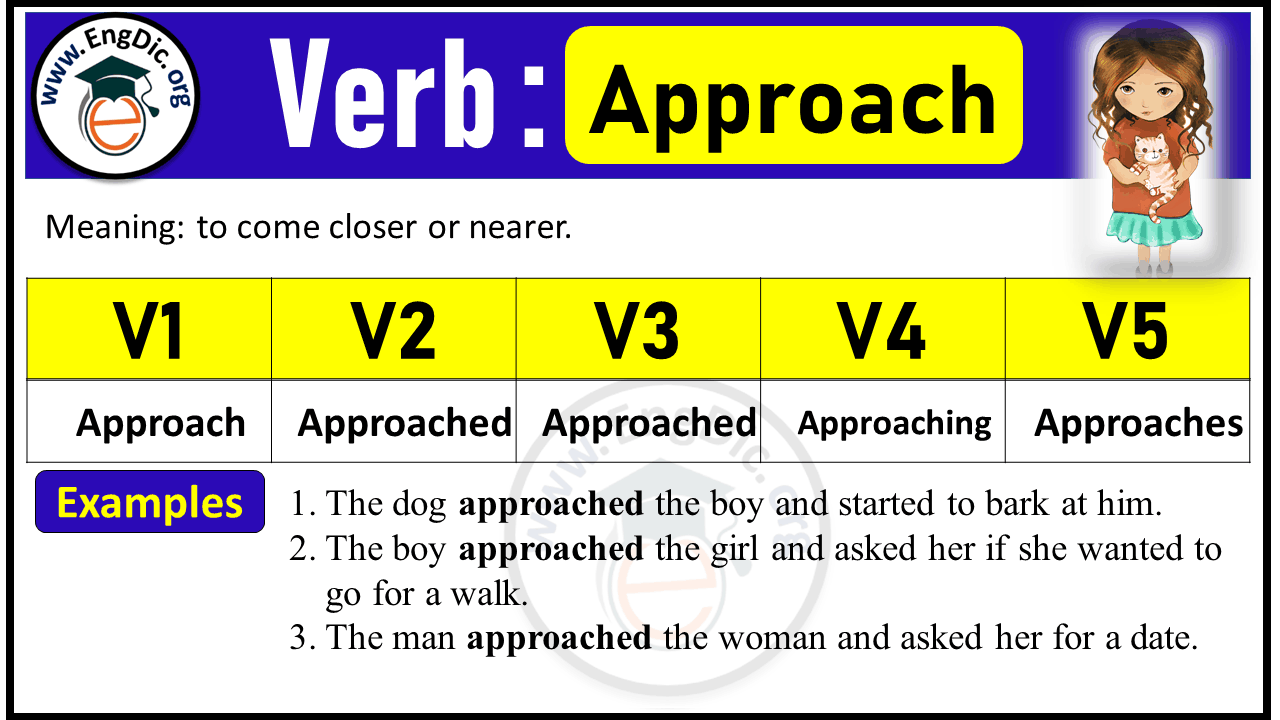Approach Past And Past Participle Form V1 V2 V3 V4 V5 Form of Approach
Are you curious about mastering English verbs? Understanding the different forms of a verb is crucial for clear and precise communication.
The verb “approach” is no exception, and knowing its various forms—past, past participle, and others—can significantly enhance your language skills. Imagine confidently using “approach” in any conversation or piece of writing, effortlessly demonstrating your grasp of English grammar. We’ll break down the V1 V2 V3 V4 V5 forms of “approach,” making it simple for you to learn and remember.
Stick with us to transform your understanding of this common verb and boost your linguistic confidence.

Credit: englishgrammarpdf.com
Understanding Approach Forms
The word “approach” changes form. This helps in different sentences. Its base form is “approach”. This is the starting point. The past form is “approached”. This shows something happened before. The past participle is also “approached”. It helps in perfect tenses. The present participle is “approaching”. It shows ongoing action. The third person singular form is “approaches”. It is used with “he”, “she”, and “it”.
Learning these forms makes writing easier. It helps in speaking too. These forms are important. Many verbs work like this. Practice using them in sentences. This makes English simple and fun. Try to use them every day.

Credit: englishstudyhere.com
Using Past Forms Of Approach
The verb approachchanges form in different tenses. In simple past, it becomes approached. The past participle is also approached. These forms are used in sentences to describe past actions.
Example: “She approached the door slowly.” This sentence uses the simple past form. Another example: “They had approached the mountain.” Here, the past participle form is used.
Understanding these forms helps in using the verb correctly. The context shows if the action is completed or ongoing. Using verbs in the right tense makes sentences clearer.
Approach In Different Contexts
The word approachchanges in different forms. In the present, it is approach. In the past, it becomes approached. As a past participle, it remains approached. This helps in writing correctly.
When using approach, think of context. “I approachmy friend.” This shows present action. “I approachedthe teacher yesterday.” This shows past action. These forms make communication clear.
| Form | Example |
|---|---|
| V1 | approach |
| V2 | approached |
| V3 | approached |
| V4 | approaching |
| V5 | approaches |
People use approachto talk about plans. “I will approachthis problem.” This means facing something. “She approachedthe dog slowly.” This shows careful movement. Using these forms correctly is important.

Credit: engdic.org
Conclusion
Understanding the verb forms of “approach” enhances English skills. V1 is “approach,” the base form. V2, “approached,” is used for past tense actions. V3, “approached,” serves as the past participle. V4, “approaching,” acts as the present participle. V5, “approaches,” is the third person singular form.
Knowing these forms improves writing and speaking. Practice using each form in sentences. This helps reinforce learning and boosts confidence. Keep exploring and applying these concepts. Your language skills will gradually improve over time. Stay consistent in your practice. Enjoy the journey of learning English.






